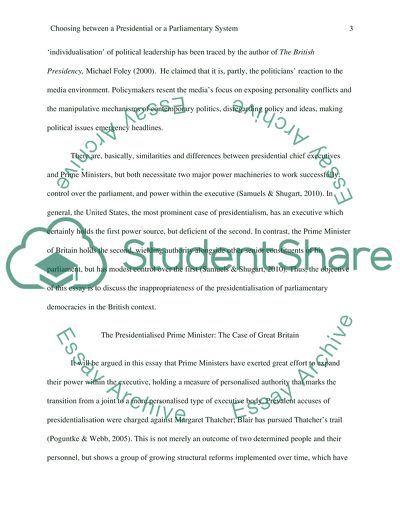Cite this document
(Choosing between a Presidential or a Parliamentary System Essay Example | Topics and Well Written Essays - 2250 words - 1, n.d.)
Choosing between a Presidential or a Parliamentary System Essay Example | Topics and Well Written Essays - 2250 words - 1. https://studentshare.org/history/1795515-if-you-had-to-recommend-either-a-presidential-or-a-parliament-system-for-a-new-democracy-which-would-you-choose-and-why
Choosing between a Presidential or a Parliamentary System Essay Example | Topics and Well Written Essays - 2250 words - 1. https://studentshare.org/history/1795515-if-you-had-to-recommend-either-a-presidential-or-a-parliament-system-for-a-new-democracy-which-would-you-choose-and-why
(Choosing Between a Presidential or a Parliamentary System Essay Example | Topics and Well Written Essays - 2250 Words - 1)
Choosing Between a Presidential or a Parliamentary System Essay Example | Topics and Well Written Essays - 2250 Words - 1. https://studentshare.org/history/1795515-if-you-had-to-recommend-either-a-presidential-or-a-parliament-system-for-a-new-democracy-which-would-you-choose-and-why.
Choosing Between a Presidential or a Parliamentary System Essay Example | Topics and Well Written Essays - 2250 Words - 1. https://studentshare.org/history/1795515-if-you-had-to-recommend-either-a-presidential-or-a-parliament-system-for-a-new-democracy-which-would-you-choose-and-why.
“Choosing Between a Presidential or a Parliamentary System Essay Example | Topics and Well Written Essays - 2250 Words - 1”. https://studentshare.org/history/1795515-if-you-had-to-recommend-either-a-presidential-or-a-parliament-system-for-a-new-democracy-which-would-you-choose-and-why.


